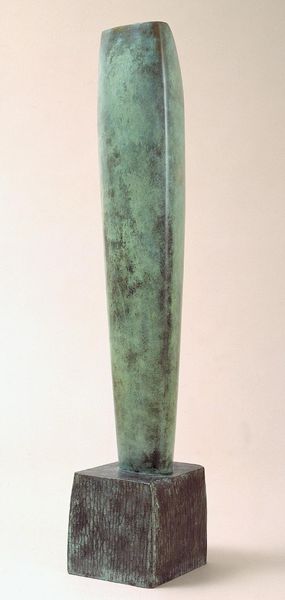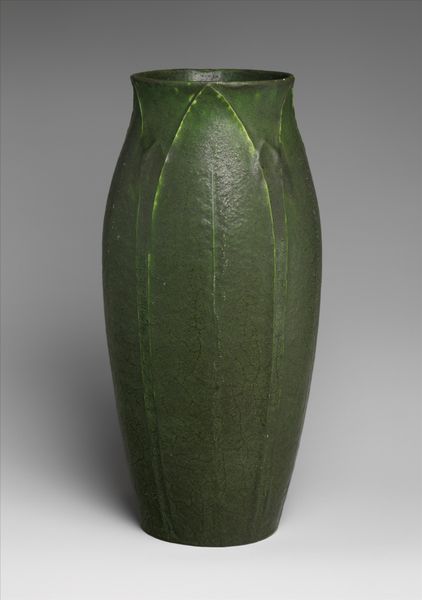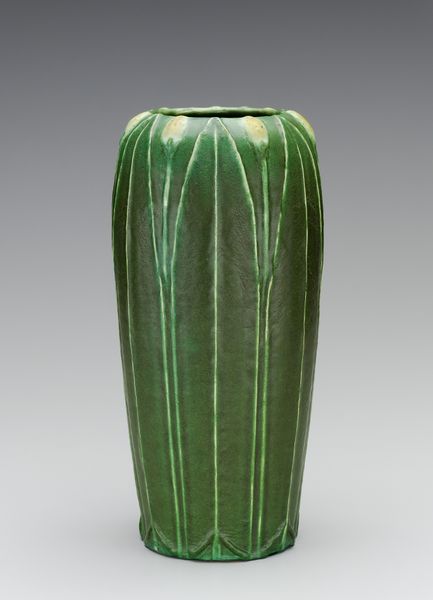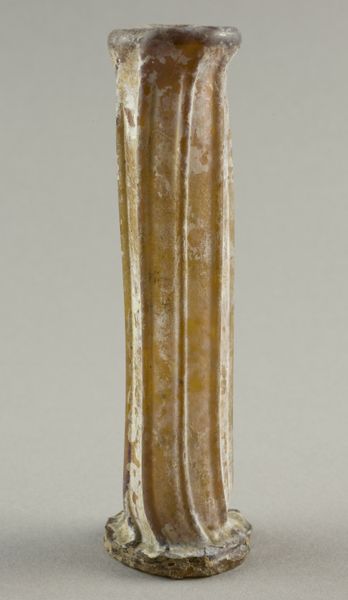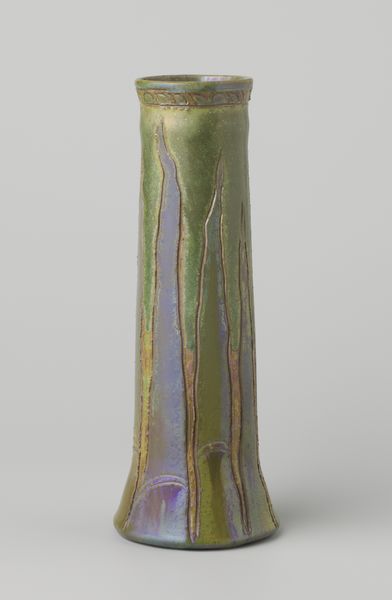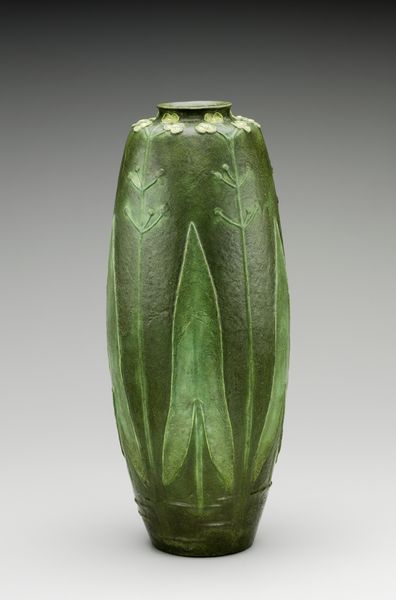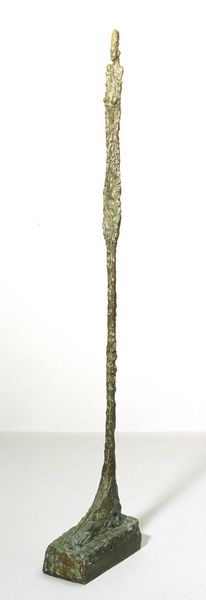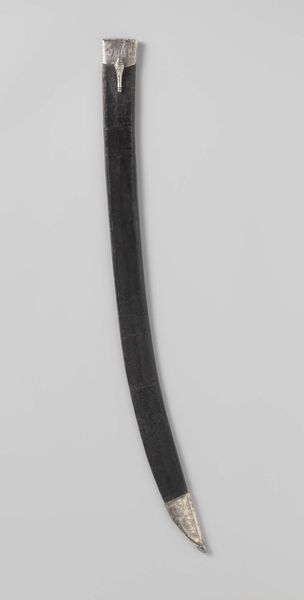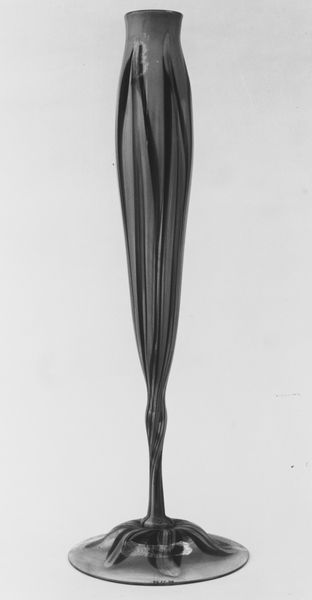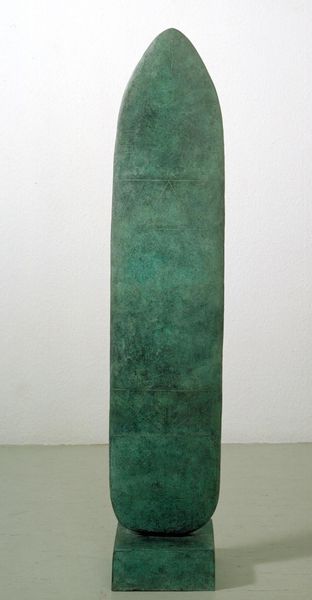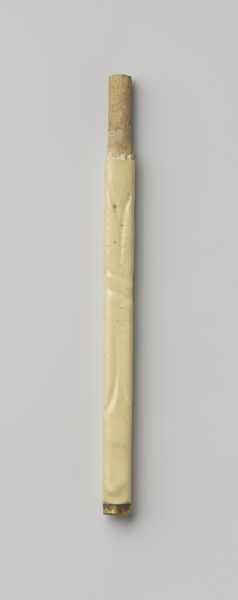
ceramic, earthenware, sculpture
#
ceramic
#
form
#
earthenware
#
stoneware
#
sculpture
#
ceramic
#
line
#
decorative-art
Dimensions: 30 x 12 in. (76.2 x 30.48 cm)
Copyright: Public Domain
Curator: It strikes me as serenely imposing. Editor: Precisely! This "Monumental Vase," dating back to about 1898, stands here as a remarkable testament to late 19th-century ceramic artistry. It is attributed to George R. Prentiss Kendrick and is currently held in the collection of the Minneapolis Institute of Art. Curator: Imposing is right. The thing is massive, and this single color! This verdant stillness makes me want to walk barefoot in a misty forest. Editor: Indeed, the form and monochrome palette command attention, although its material reality is less "grand" than one would think. Kendrick's vase uses humble earthenware, adorned with a subtle vertical pattern. The fluting and restrained design speak volumes about the aesthetic inclinations of the period. Curator: And yet it avoids being austere. It’s got this... imperfection. It’s not sleek and shiny. The glaze feels almost textured like reptile skin if a reptile could also be a comforting mossy stone. Is this deliberate, do you think? Or happy accidents in the firing? Editor: Ah, the intentionality behind "imperfections" is always the enigma, isn't it? However, by looking at the structural vocabulary, you could make a good argument that it underscores a kind of visual harmony—one that eschews high-gloss perfection for a hand-wrought naturalism. It's almost as if the piece yearns to bridge the divide between pure form and something touched by nature's own patina. Curator: Makes me consider the person behind this vessel; imagine them coaxing this muted vitality out of clay and fire. The vessel demands attention and embodies the power of nature to endure. Editor: So well said. In observing its very specific visual strategies—the considered color, the balance, the carefully wrought pattern, the quiet asymmetry — one can sense a whole cultural attitude being expressed, a whole set of values made manifest through material form.
Comments
minneapolisinstituteofart almost 2 years ago
⋮
The subtle, low-relief carvings of leafy vegetation on the sides of the vase conspire with the light-green ridges framing them to accentuate the verticality of the vase. William H. Grueby’s rich, matte green glaze was a leading innovation in the ceramic world in the late 1800s. The understated hue quietly evokes nature indoors while successfully representing a leafy surface.
Join the conversation
Join millions of artists and users on Artera today and experience the ultimate creative platform.
